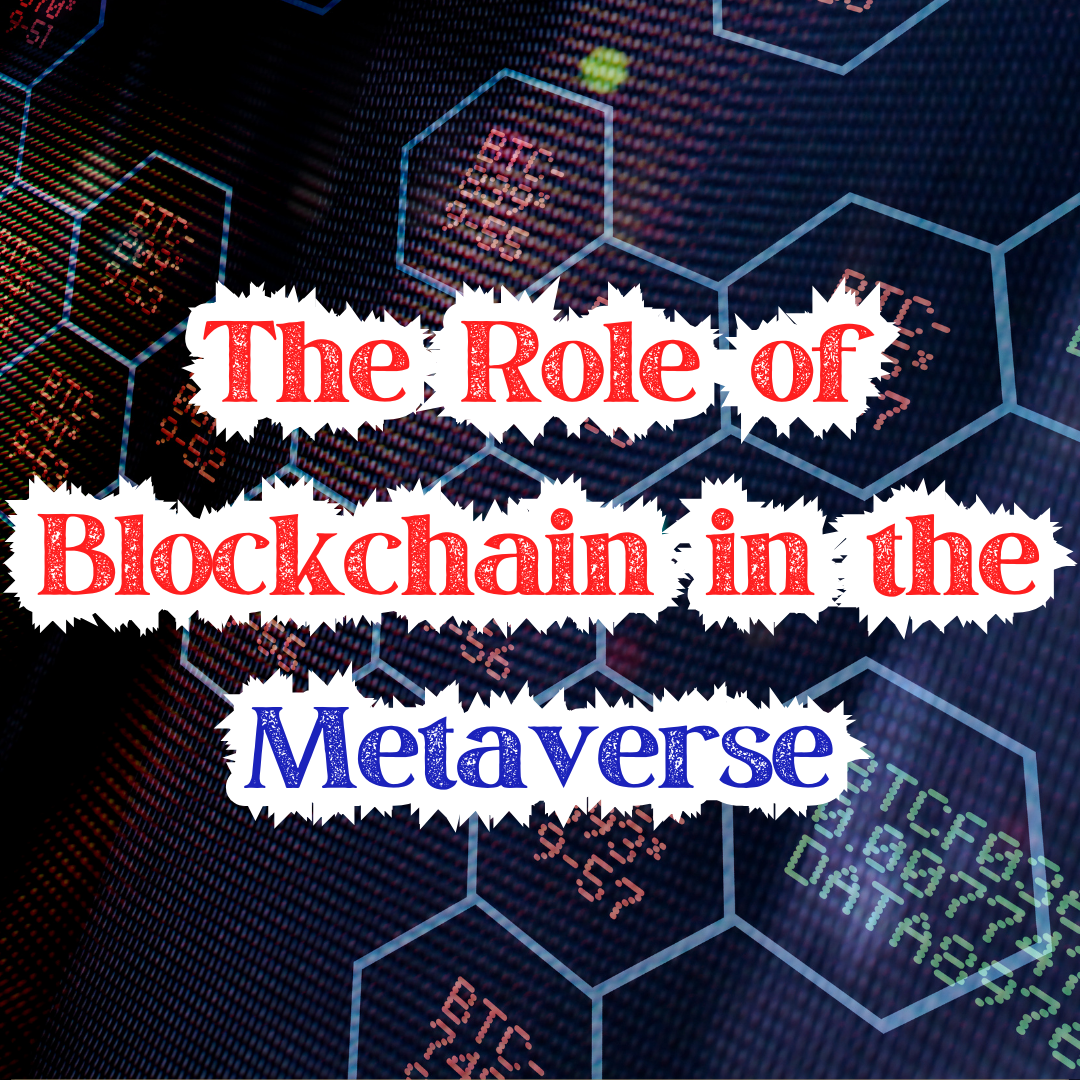Introduction
The metaverse is rapidly evolving, promising a digital universe where virtual and physical worlds converge. At the heart of this evolution lies blockchain technology, a distributed ledger system that is reshaping how we perceive and interact with digital assets. In this comprehensive exploration, we will delve deep into the role of blockchain in the metaverse, examining how it is transforming digital ownership, ensuring secure transactions, and fostering the development of decentralized applications (DApps).
Chapter 1: Understanding the Metaverse
To comprehend the significance of blockchain in the metaverse, we must first understand the metaverse itself. This chapter provides a comprehensive overview of the metaverse concept, its history, and the fundamental elements that constitute this vast digital realm.
1.1. Defining the Metaverse
- Defining the metaverse and its evolution.
- The distinction between the metaverse, virtual reality (VR), and augmented reality (AR).
1.2. Historical Roots
- Tracing the origins of the metaverse concept.
- Key milestones in the development of digital worlds and online communities.
1.3. Components of the Metaverse
- An exploration of metaverse components, including avatars, virtual environments, and virtual economies.
- The role of user-generated content and social interactions in shaping the metaverse.
Chapter 2: The Foundations of Blockchain
Before diving into blockchain’s role in the metaverse, it’s essential to establish a solid understanding of blockchain technology itself. This chapter offers an in-depth look at blockchain, its principles, and its potential applications.
2.1. Blockchain Basics
- A comprehensive introduction to blockchain technology.
- Explaining blockchain’s decentralized nature and security features.
2.2. Blockchain Use Cases
- A survey of blockchain’s diverse applications beyond cryptocurrencies.
- Real-world examples of blockchain in finance, supply chain, and more.
Chapter 3: Digital Ownership in the Metaverse
Blockchain technology brings a paradigm shift to digital ownership in the metaverse. This chapter explores how blockchain enables users to have true ownership of digital assets, including virtual real estate, digital art, and in-game items.
3.1. NFTs: The New Digital Ownership
- Understanding Non-Fungible Tokens (NFTs) and their role in the metaverse.
- How NFTs revolutionize the concept of digital ownership.
3.2. Virtual Real Estate and Property Rights
- The emergence of virtual real estate markets in the metaverse.
- Leveraging blockchain for secure property rights and ownership.
Chapter 4: Secure Transactions in the Metaverse
Blockchain’s security features play a pivotal role in ensuring trust and safety within the metaverse. This chapter delves into how blockchain technology enables secure and transparent transactions, making it an essential component of the metaverse’s infrastructure.
4.1. Cryptocurrencies as the Metaverse Currency
- The adoption of cryptocurrencies as the primary means of exchange in the metaverse.
- How blockchain ensures the security and integrity of digital transactions.
4.2. Smart Contracts and Escrow Services
- An exploration of smart contracts and their role in facilitating automated transactions.
- The use of blockchain-based escrow services for secure transactions.
Chapter 5: Decentralized Applications (DApps) in the Metaverse
Decentralized applications (DApps) are at the forefront of innovation in the metaverse. This chapter examines how blockchain technology empowers developers to create DApps that enhance user experiences and provide novel functionalities.
5.1. What Are Decentralized Applications (DApps)?
- Defining DApps and their decentralized nature.
- Examples of DApps in the metaverse, including virtual marketplaces and social platforms.
5.2. Interoperability and Cross-Platform Experiences
- The importance of interoperability in the metaverse.
- How blockchain facilitates cross-platform experiences and connectivity between virtual worlds.
Chapter 6: Challenges and Ethical Considerations
As blockchain technology integrates further into the metaverse, it brings forth several challenges and ethical considerations. This chapter explores these issues, including privacy concerns, security risks, and potential societal impacts.
6.1. Privacy and Data Security
- The importance of protecting user data and digital identities in the metaverse.
- Blockchain-based solutions for enhanced privacy and security.
6.2. Scalability and Environmental Concerns
- Addressing scalability challenges in blockchain technology.
- The environmental impact of blockchain mining and potential solutions.
6.3. Digital Ethics and Virtual Realities
- Ethical considerations related to digital experiences, addiction, and mental health.
- Ensuring ethical design and user well-being in the metaverse.
Chapter 7: The Future of Blockchain in the Metaverse
In this concluding chapter, we gaze into the future and envision how blockchain technology will continue to shape the metaverse. We explore emerging trends, potential innovations, and the transformative impact on various industries and society as a whole.
7.1. Emerging Trends and Innovations
- Predictions for the future of the metaverse and blockchain integration.
- Technological advancements that may further enhance the metaverse experience.
7.2. Blockchain Beyond the Metaverse
- The broader implications of blockchain technology beyond the metaverse.
- How blockchain will continue to disrupt industries and reshape economies.
Conclusion
The integration of blockchain technology into the metaverse represents a groundbreaking shift in the way we perceive and interact with digital realms. It empowers users with true digital ownership, ensures secure transactions, and fosters innovation through decentralized applications. While challenges and ethical considerations exist, the future of the metaverse holds the promise of a more immersive, interconnected, and secure digital landscape, thanks to the transformative power of blockchain technology.

